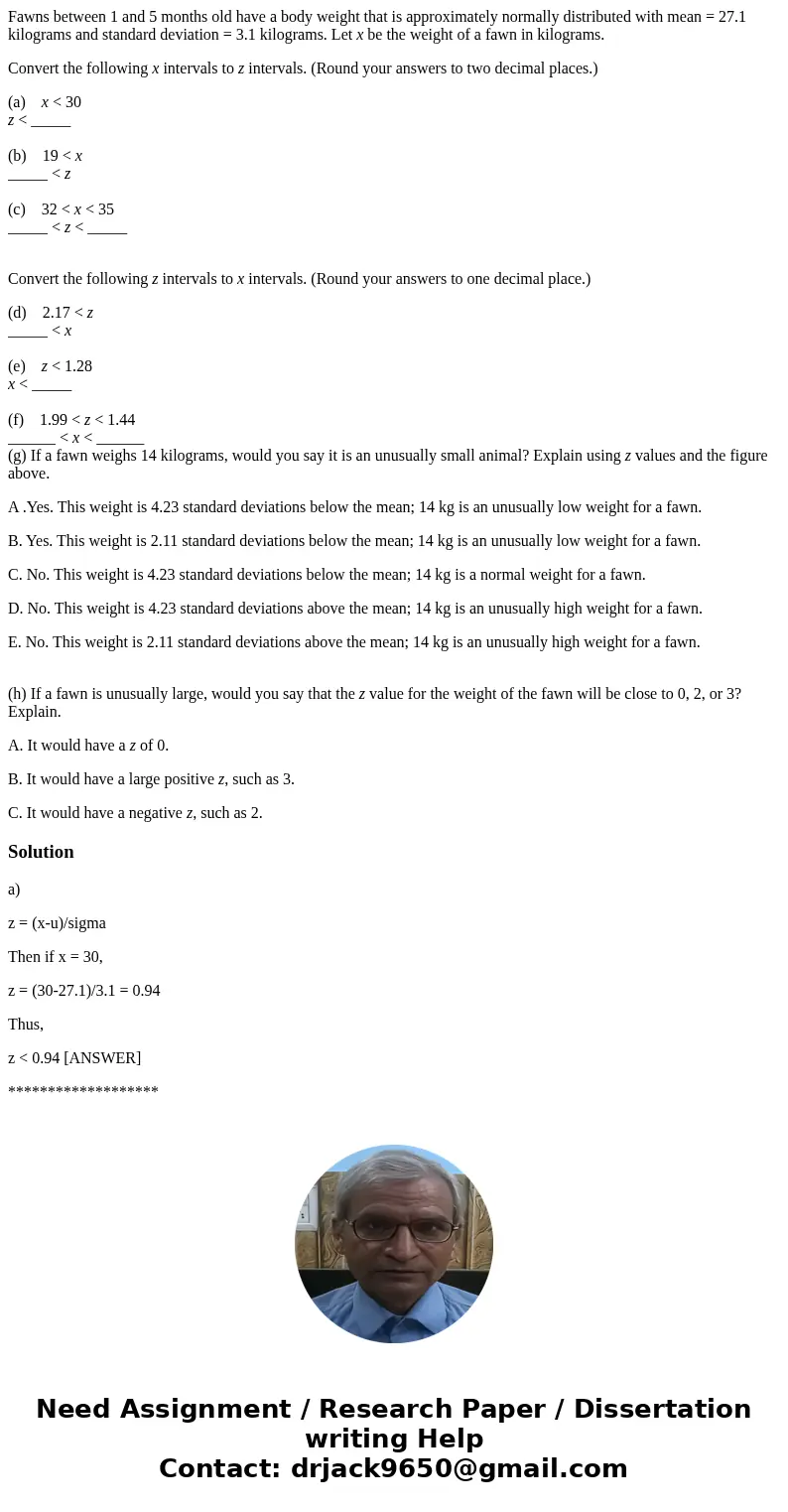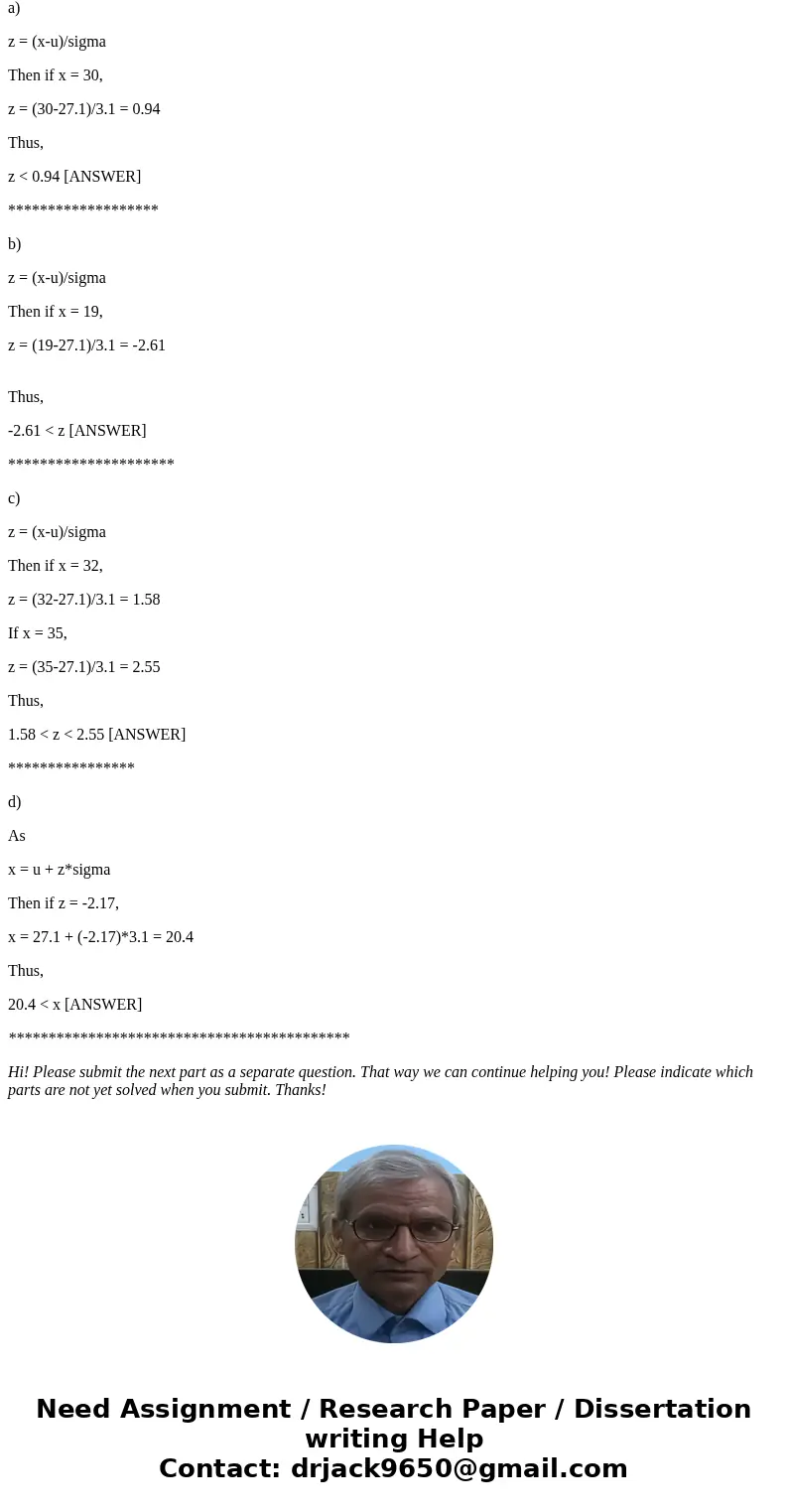Fawns between 1 and 5 months old have a body weight that is
Fawns between 1 and 5 months old have a body weight that is approximately normally distributed with mean = 27.1 kilograms and standard deviation = 3.1 kilograms. Let x be the weight of a fawn in kilograms.
Convert the following x intervals to z intervals. (Round your answers to two decimal places.)
(a) x < 30
z < _____
(b) 19 < x
_____ < z
(c) 32 < x < 35
_____ < z < _____
Convert the following z intervals to x intervals. (Round your answers to one decimal place.)
(d) 2.17 < z
_____ < x
(e) z < 1.28
x < _____
(f) 1.99 < z < 1.44
______ < x < ______
(g) If a fawn weighs 14 kilograms, would you say it is an unusually small animal? Explain using z values and the figure above.
A .Yes. This weight is 4.23 standard deviations below the mean; 14 kg is an unusually low weight for a fawn.
B. Yes. This weight is 2.11 standard deviations below the mean; 14 kg is an unusually low weight for a fawn.
C. No. This weight is 4.23 standard deviations below the mean; 14 kg is a normal weight for a fawn.
D. No. This weight is 4.23 standard deviations above the mean; 14 kg is an unusually high weight for a fawn.
E. No. This weight is 2.11 standard deviations above the mean; 14 kg is an unusually high weight for a fawn.
(h) If a fawn is unusually large, would you say that the z value for the weight of the fawn will be close to 0, 2, or 3? Explain.
A. It would have a z of 0.
B. It would have a large positive z, such as 3.
C. It would have a negative z, such as 2.
Solution
a)
z = (x-u)/sigma
Then if x = 30,
z = (30-27.1)/3.1 = 0.94
Thus,
z < 0.94 [ANSWER]
*******************
b)
z = (x-u)/sigma
Then if x = 19,
z = (19-27.1)/3.1 = -2.61
Thus,
-2.61 < z [ANSWER]
*********************
c)
z = (x-u)/sigma
Then if x = 32,
z = (32-27.1)/3.1 = 1.58
If x = 35,
z = (35-27.1)/3.1 = 2.55
Thus,
1.58 < z < 2.55 [ANSWER]
****************
d)
As
x = u + z*sigma
Then if z = -2.17,
x = 27.1 + (-2.17)*3.1 = 20.4
Thus,
20.4 < x [ANSWER]
*******************************************
Hi! Please submit the next part as a separate question. That way we can continue helping you! Please indicate which parts are not yet solved when you submit. Thanks!


 Homework Sourse
Homework Sourse